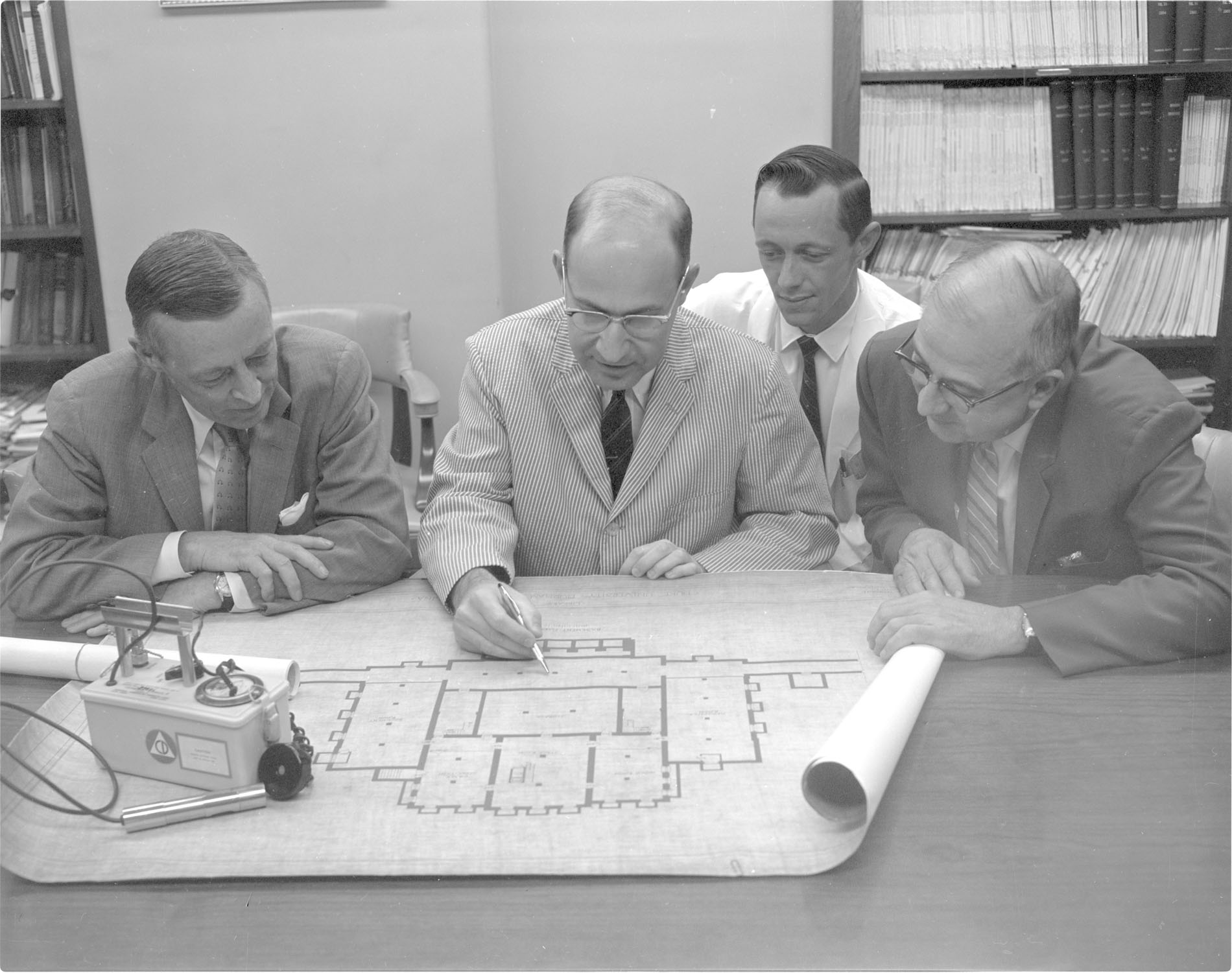At Duke, we prepare for the unexpected. Whether it is a pandemic or a weather emergency, university leaders ensure the Duke community has the training and resources to keep us safe. That has long been the case, and for a two-year period in the early 1960s, Duke University faculty, staff and students planned intensively for the possibility of a nuclear war. The Fallout Preparedness Committee created a cross-campus system of shelters and training to prepare for the unthinkable.
In 1961, a tense standoff between the Soviet Union and the United States resulted in the construction of the Berlin Wall. Americans feared that escalating Cold War tensions would lead to the use of nuclear weapons. At Duke, the already formed Medical Education for National Defense (MEND) committee was asked in July of that year to consider “fallout protection” for the medical center. In September, Duke president Deryl Hart expanded the committee and put the entire university in their purview. Chaired by Dr. William Anlyan, professor of surgery (and soon after named dean of the Medical School), the Fallout Preparedness Committee began assembling plans to shelter students, staff, faculty and their families – approximately 25,000 people.
A 1962 progress report of the committee detailed a number of preparations that Duke was putting into place. “Shelters” were specific floors of West Campus and East Campus buildings, and people were assigned to certain shelter “units” based on their job types or residences. For example, the library had units that subdivided the lower level, first floor and second floor, estimating that an individual required a very modest 12-15 square feet. Among the recommendations was that university stock up on antibiotics and a barbiturate, with the threats of communicable disease and anxiety being most pressing in a shelter situation. Preserving mental and emotional health of those of sheltering was considered alongside the provisions for physical safety. The mental hygiene subcommittee suggested that shelter locations be stocked with cards, checkers, chess and books. They also recommended that song books and community prayer be made available.
The subcommittees of the Fallout Preparedness Committee demonstrate the various aspects of survival being planned for: Radiation Protection; Engineering and Construction; Emergency Power Supply; Communications; Ventilation and Water; Housekeeping – Food & Supplies; Fall-Out Preparedness Plan Organization and Traffic Control; Mental Hygiene and Recreation; Medical Care During Confinement in Shelter; and Education and Training of University Personnel.
It was this last committee that offered a Shelter Management Course to faculty, staff and students. It consisted of two three-hour courses to learn about the science of nuclear fallout and how to appropriately prepare a shelter, followed by 12-hour session that mimicked an attack and shelter scenario. There were periodic announcements that the participants were meant to respond to, ranging from a measles outbreak to “bands of looters” to power failure. At the 11-hour mark, the organizers broadcast to participants: “Attention please. This is an official announcement. The enemy has surrendered. We have won. I repeat, the enemy has surrendered. We have won.” For the last hour participants would discuss when it was appropriate to leave the shelter and clean up. In addition to Duke community participants, there were also officials from local businesses and schools, including Liggett & Myers Tobacco Co., North Carolina Mutual Life Insurance Co., and the historically Black schools North Carolina College (now North Carolina Central University) and Hillside High School.
There also was education for how to shelter at home. In a pamphlet distributed to Duke community members titled “Fallout: What Happens to Durham, North Carolina?” the reader was cautioned: “The worst probable target from Durham’s point of view would be Greensboro. Because normal winds come from the west, a nuclear weapon dropped in the Greensboro area would send more fallout over Durham than the same weapon dropped in the Raleigh area.” It advised the reader how to take shelter, what the necessary supplies were, and even how to clean up once the worst had passed. With optimism, the pamphlet advised, “A very effective way of removing fallout is by vacuum cleaning. In fact, vacuum cleaning alone should remove 90% of indoor fallout.”
The Fallout Preparedness Committee did not issue additional reports after 1963, although the Shelter Management Courses continued until at least 1966, at which point more than 80,000 shelter spaces at Duke were identified and stocked with government-supplied survival items. As the immediate threat of nuclear war faded, so too did these extraordinary precautions. One may still come across a Fallout Shelter sign on campus, a remnant of this unique phase at the university.

